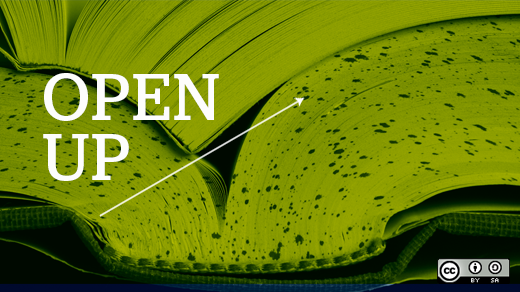I spent the past year or so writing Learn Linux in a Month of Lunches, which is designed to introduce desktop Linux to non-technical users. This is a rundown of the tools I used to create the book, with the HUGE caveat that tools are just that—tools. They don't actually do any work or planning for you. However, the right tools make the work much easier. These are the tools that were right for me.
Open source tools for writing
Brackets and Asciidoc
I wrote the whole book in Asciidoc using the Brackets editor. I have written about this process before, because Asciidoc is amazing. It is simple markup, not unlike Markdown, that easily turns into PDFs (via a2x). I spent almost no time formatting my manuscripts. I just worried about words. Brackets has a great extension that rendered Asciidoc for me, so I could make sure everything looked OK. It was a wonderful way to work, essentially just pure writing and no formatting.
GIMP
Speaking of screenshots, I handled everything in GIMP. While the GIMP interface hasn't gotten any easier to work with, it doesn't change much, so I've had years to learn it. I also did a few charts using LibreOffice Draw, but GIMP was really my workhorse graphics program.
Git
I tried to use Git for years and it never sunk in. I think part of that is because I didn't have a good project I needed it for. Luckily for me, when I moved to writing in Asciidoc, it meant I had to use my publisher's private Git repository to submit chapters. It made for a very easy workflow. Instead of uploading documents somewhere, and downloading them for comments, Git handled everything for me. Comments were inserted in the text, using the Asciidoc comment syntax. We didn't do any fancy branching or forking and I'm OK with that.
Xubuntu 12.04
I use Xubuntu 12.04. It's steady and sturdy and it did everything I needed it to. It's over four years old, but it has all of the software and functionality I need. The nice thing about the LTS Ubuntu releases is that you really can use them for years without even realizing it's been that long.
Other tools I used
Dropbox
I know. I know. It's closed-source and proprietary. But it works so well! I had access to my files everywhere, which was good when I wasn't on my usual computer. It also came in handy for the few times I needed Windows screenshots.
Skype
This wasn't my choice. My publisher is virtual, so everyone working there uses Skype to talk to each other and to writers. I used Skype on Linux and had no issues, although there were occasional hiccups on the Windows end of things, which I found a little funny. I wasn't a Skype guy when I started writing the book and I'm not a Skype guy now, but it worked consistently, which is all I can ask. I was lucky, because the future for Skype on Linux doesn't look great.
VirtualBox
VirtualBox continues to amaze me. It let me spin up different distributions and desktop environments in the space of minutes without needing extra hardware, although I did eventually need to buy a spare hard drive. I recommend it in the book as an easy way to get Linux running, and it was great for me in terms of getting screenshots.
I feel silly mentioning this, since everyone uses email for everything, but email was a huge part of writing this book. My editor and I spoke regularly over Skype, but we also did a lot of planning and organizing over email. I know email isn't cool and there are all sorts of pushes to get rid of it, but it does come in handy for lots of things. Sorry Slack!
Remember the Milk
I recently wrote a long love letter to Remember the Milk. There are lots of moving parts when you're writing a book, from writing, to marketing, to editing, to researching. Remember the Milk allowed me to plot out what needed to be done and when. It also kept my work and personal life straight.
Paper
This isn't an app or a tool. I just find it helpful to print things. My editor recommends printing when it is time to edit, so you see the text in a different way. I also had hard copies of my Asciidoc documentation. Paper is nice!
Post-its
I got a huge package of Post-Its from a conference and found them when I started writing the book. I used little 3/8 X 1 7/8" ones to write short notes to myself. I could fit only a sentence or two on each one, so they were concentrated yet easy-to-deal-with. And now, when I use a regular size Post-It, I feel like I have a ton of space.
Fountain pens
I don't like to fetishize office supplies, but I wound up buying a Lamy Safari fountain pen during the start of the book, and I really actively enjoyed writing with it. Later on, I added a Pilot Metropolitan Fountain pen. They're cheap fountain pens that feel great and made mundane things, like taking notes, feel wonderfully luxurious. Now, when I use a ballpoint pen, I feel like I'm slumming it. I can't recommend taking the fountain pen plunge enough. One interesting thing to note is that there is a fair amount of analog stuff on this list. Technology is wonderful, but there are a reason some classic tools—like pens and paper—are classics. At the same time, I'm grateful to live in the time of Asciidoc! If there's one takeaway from writing this book, it's that you need to find your personal balance between high- and low-tech. It's worth taking the time to think about.




6 Comments